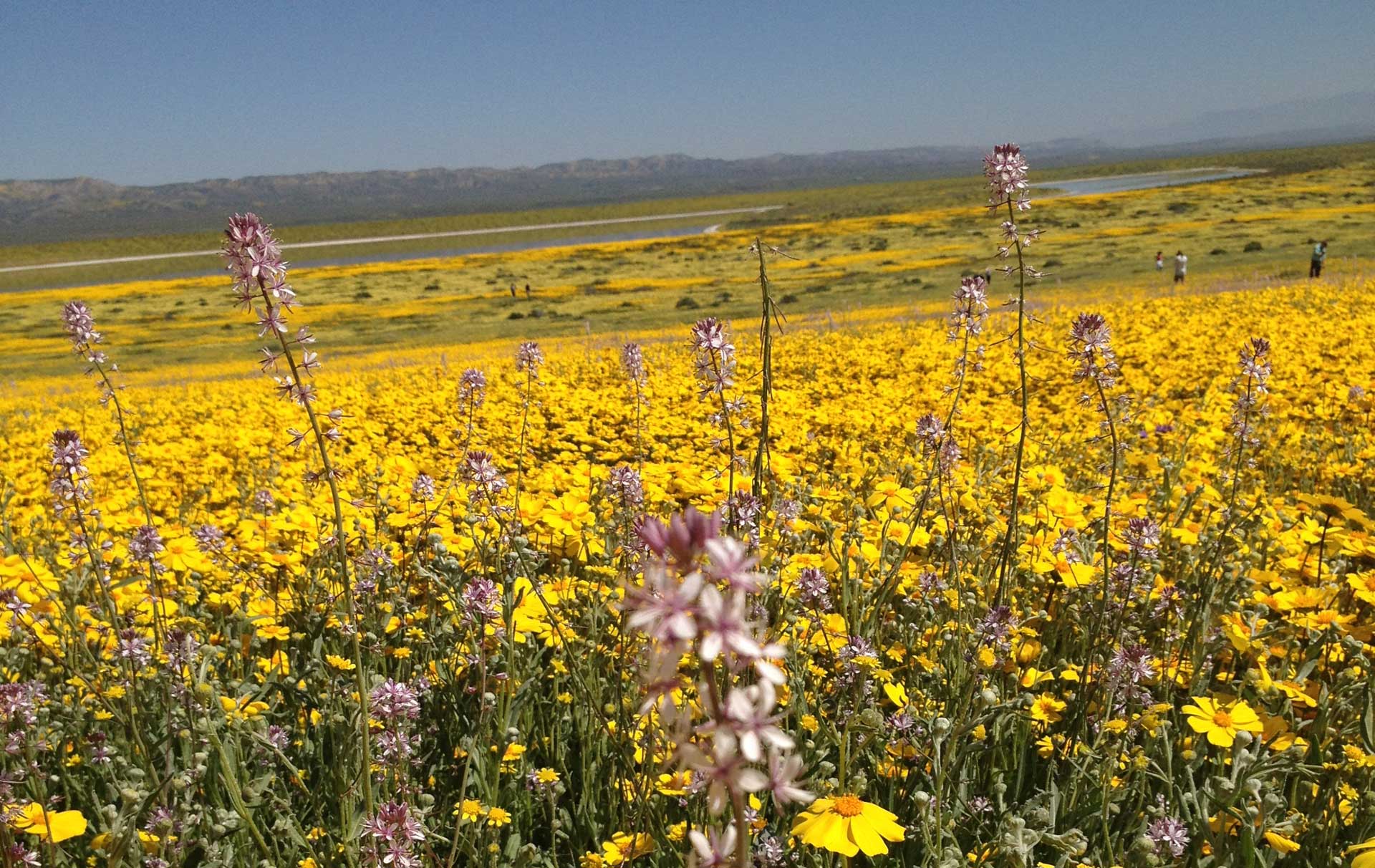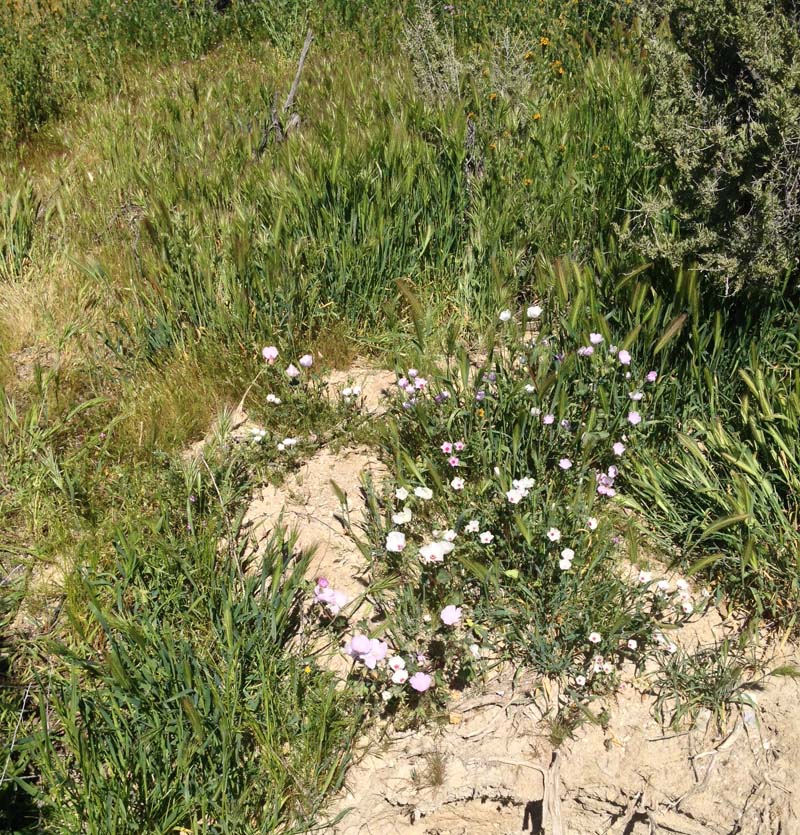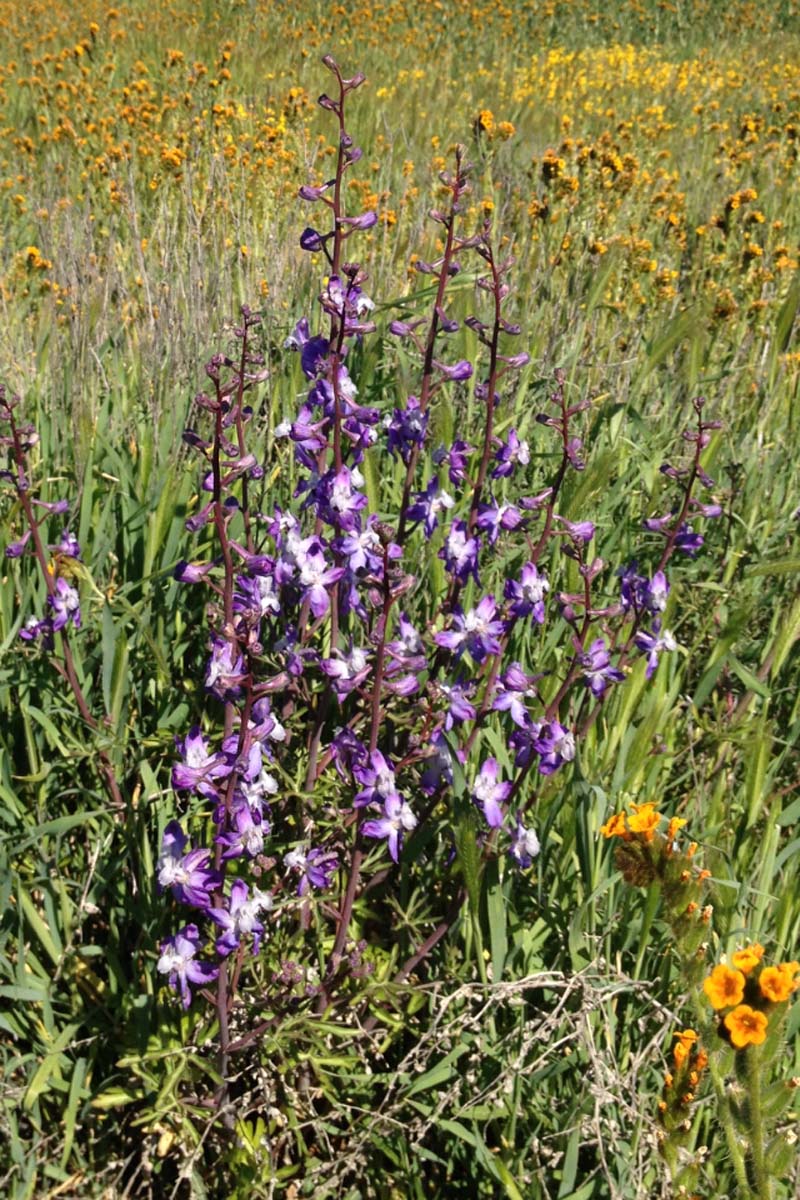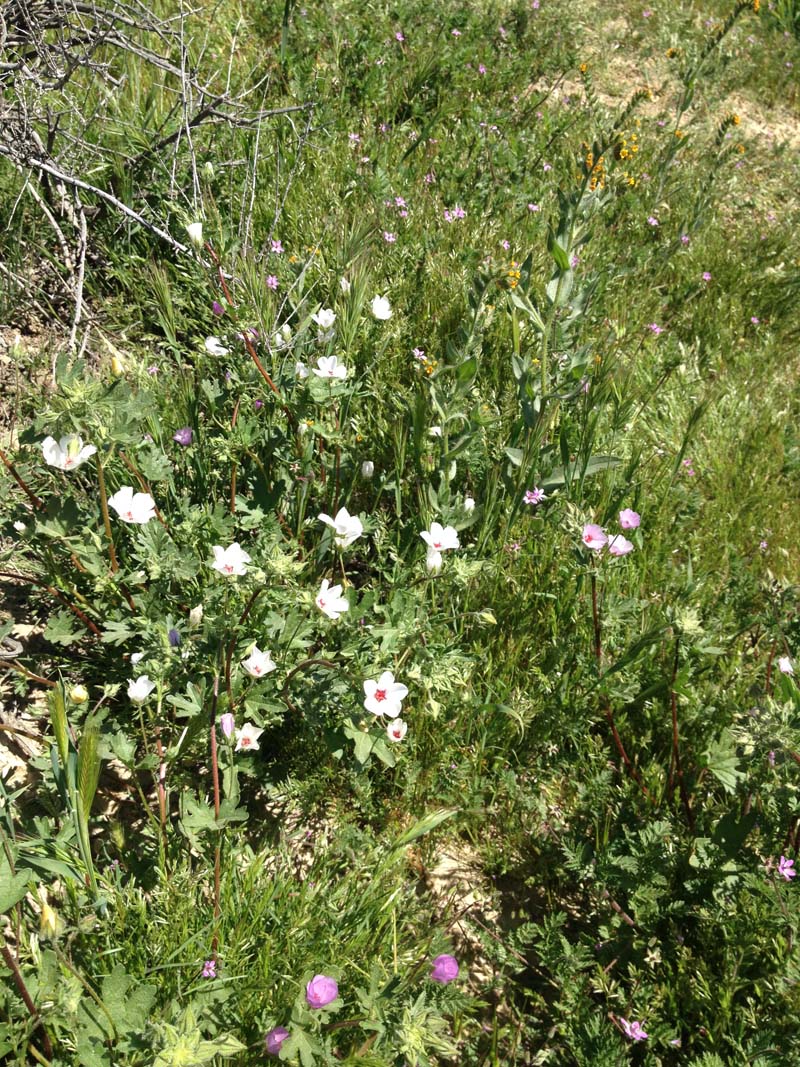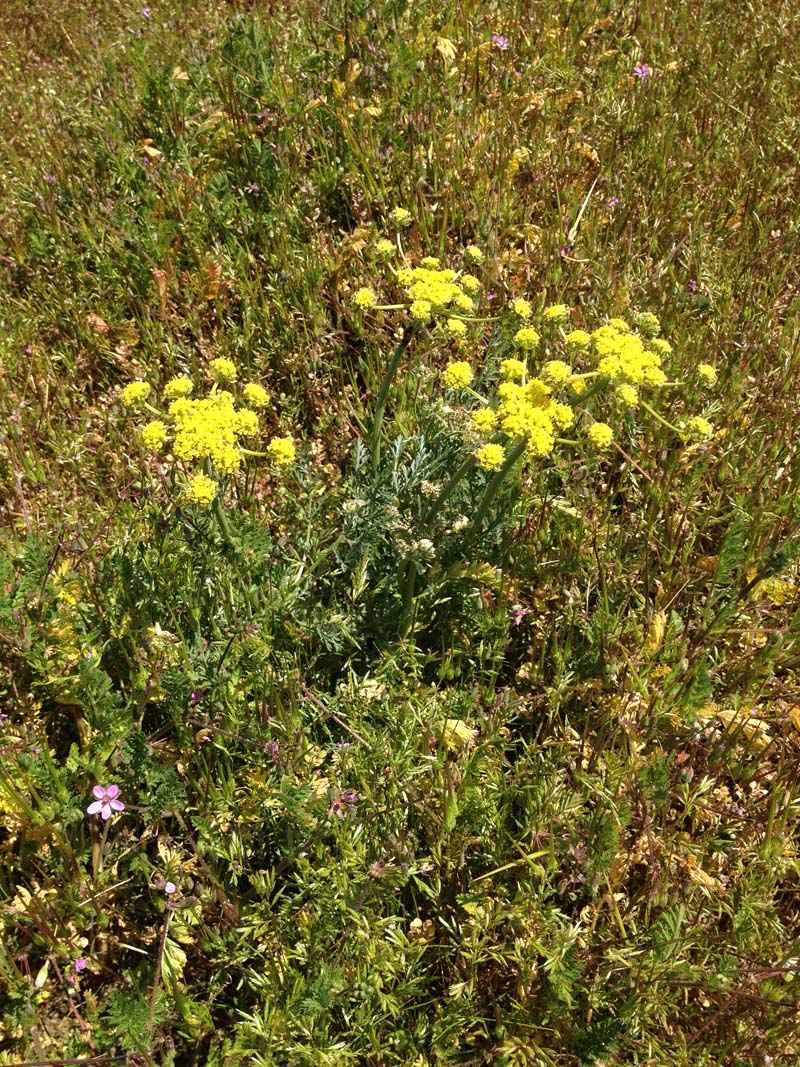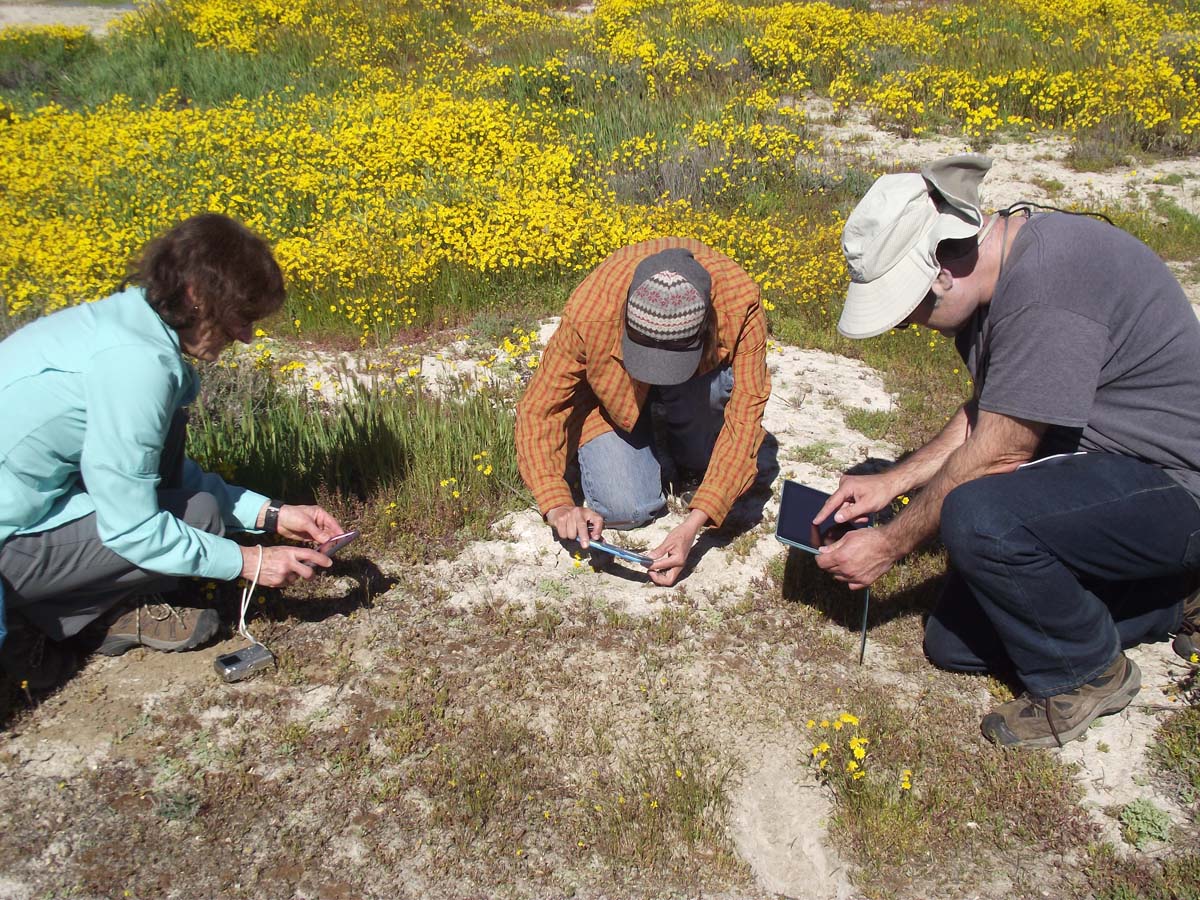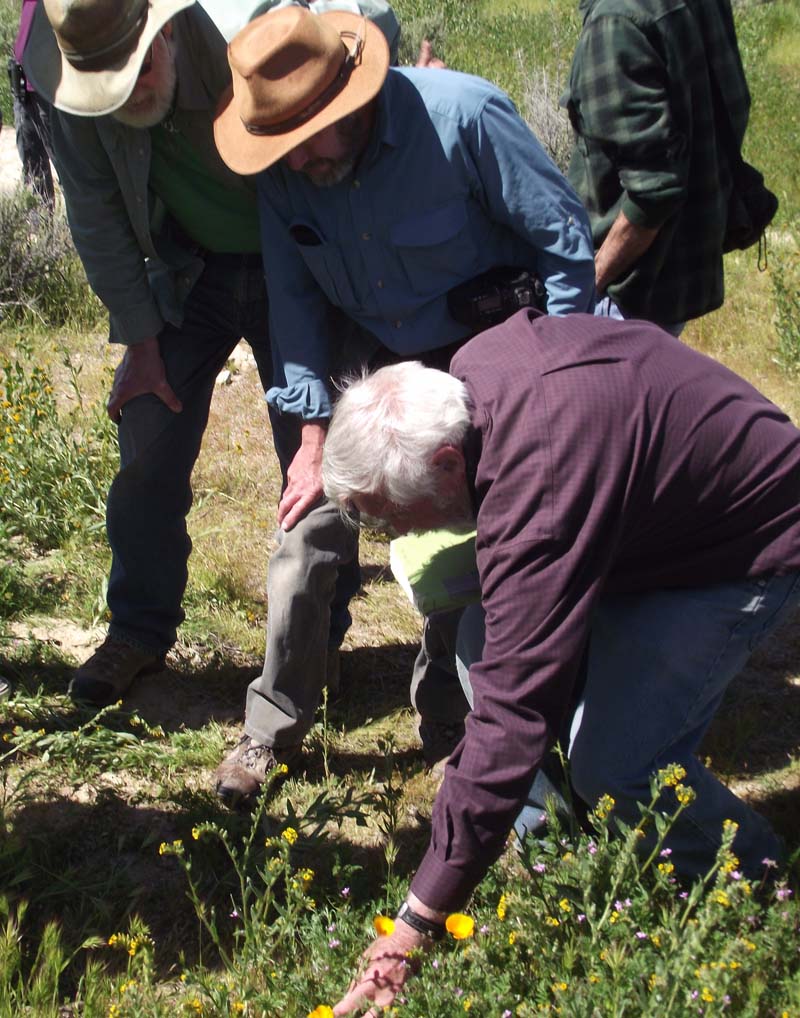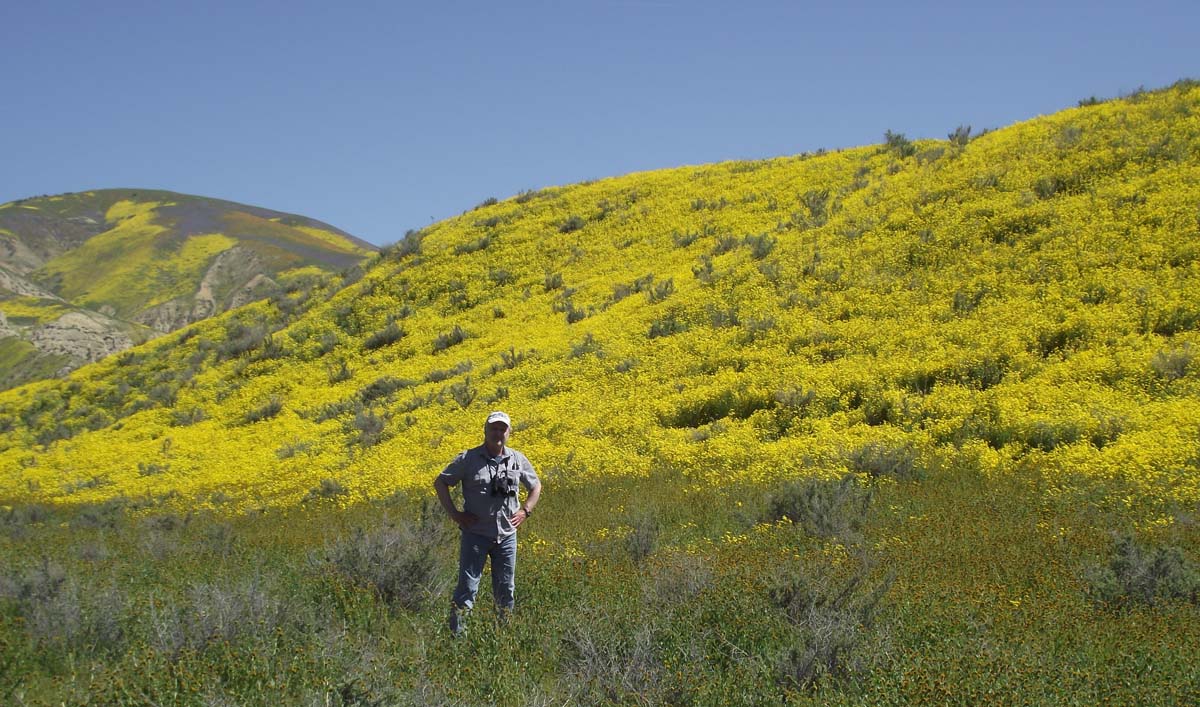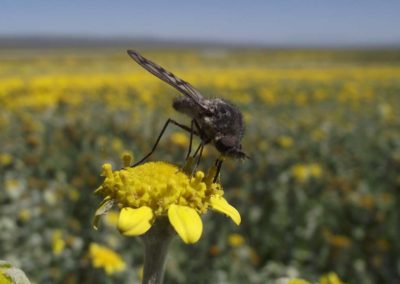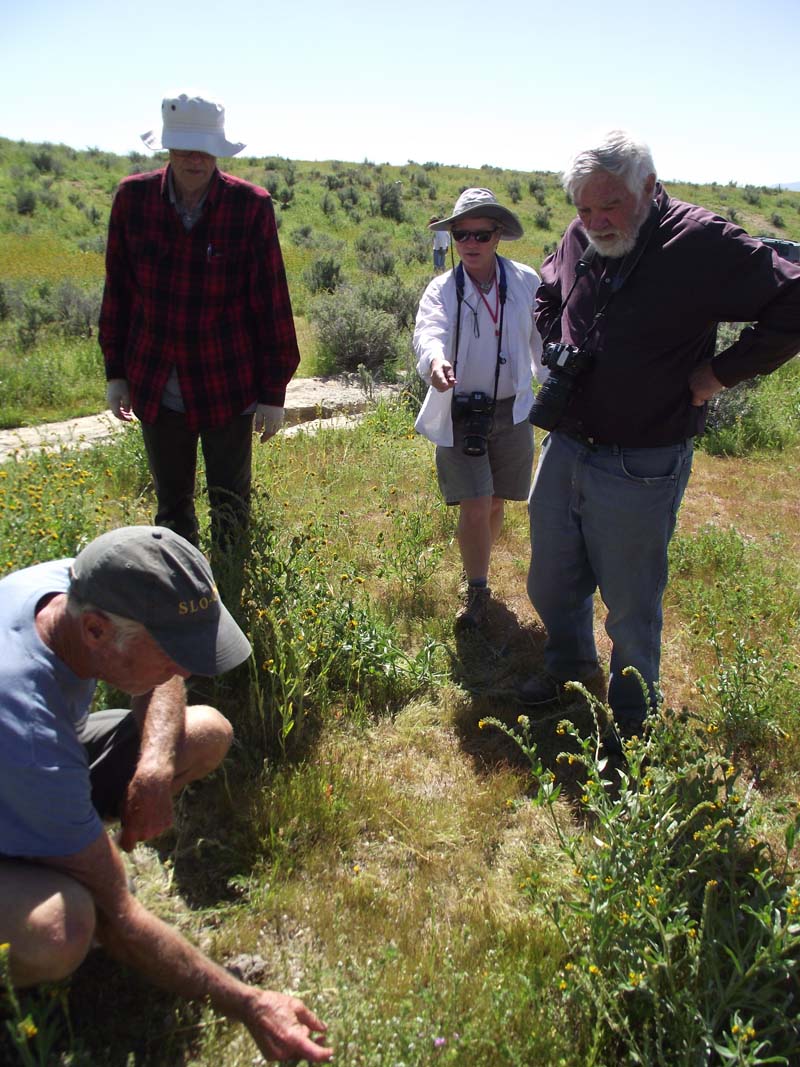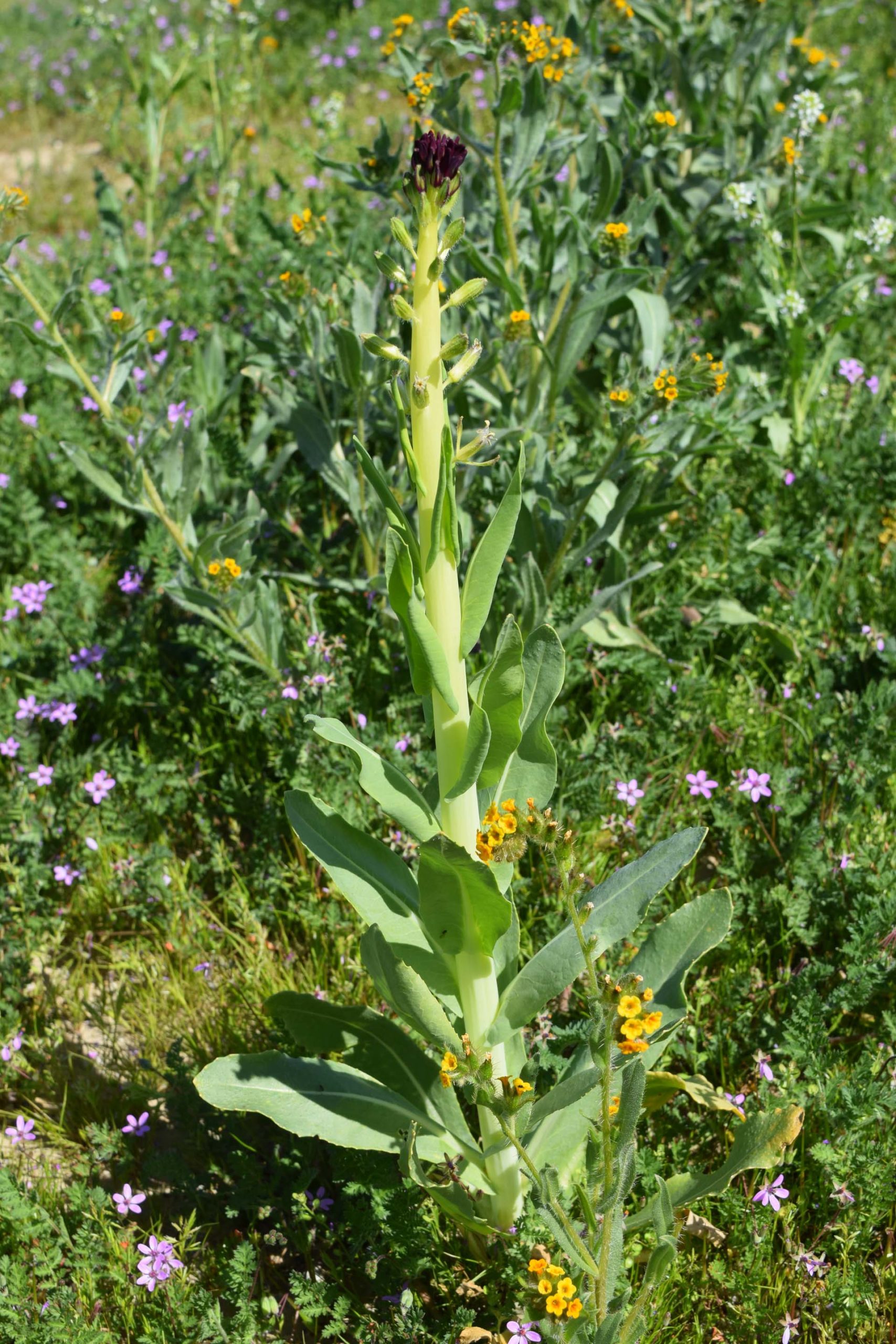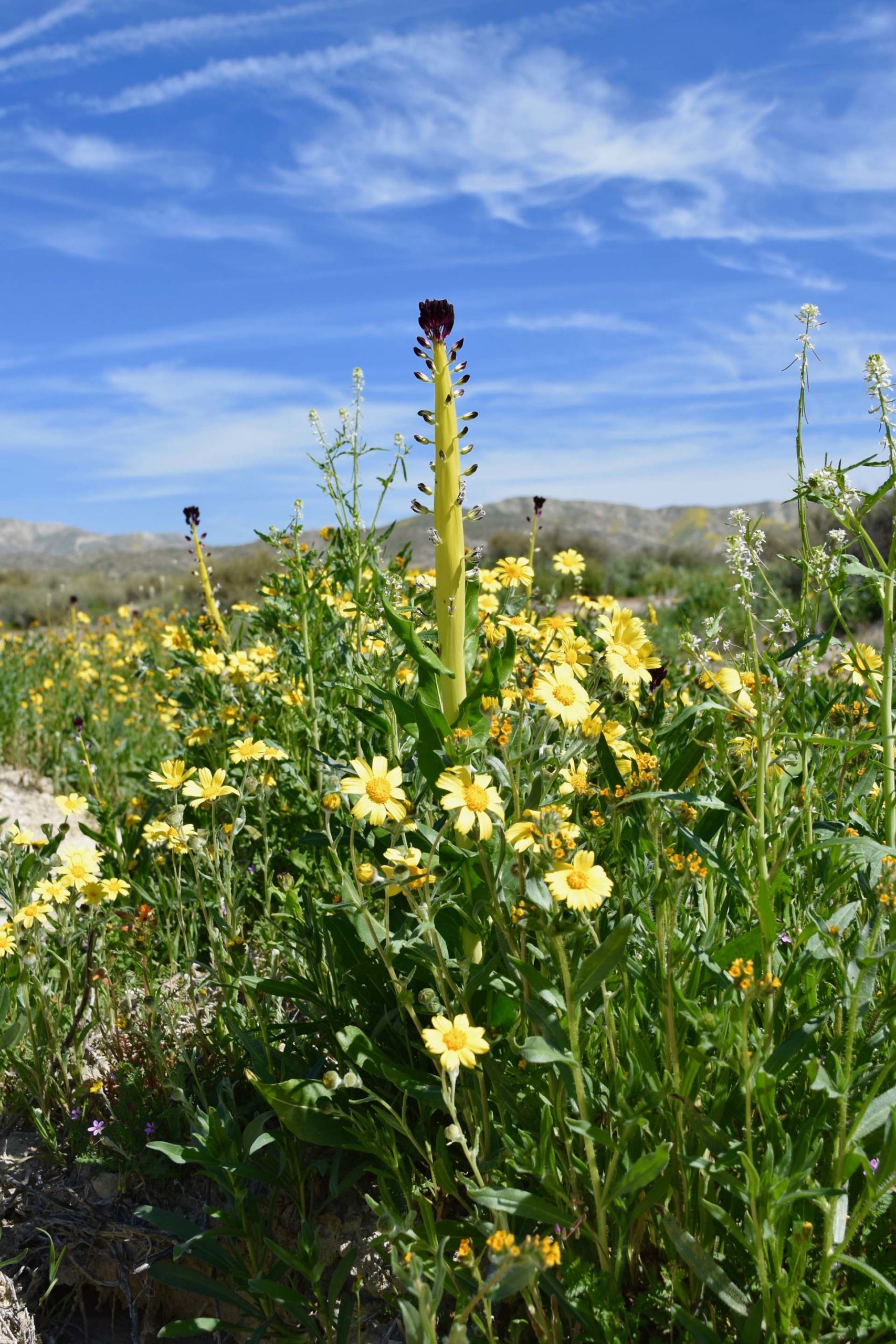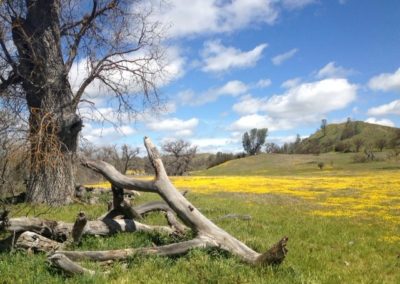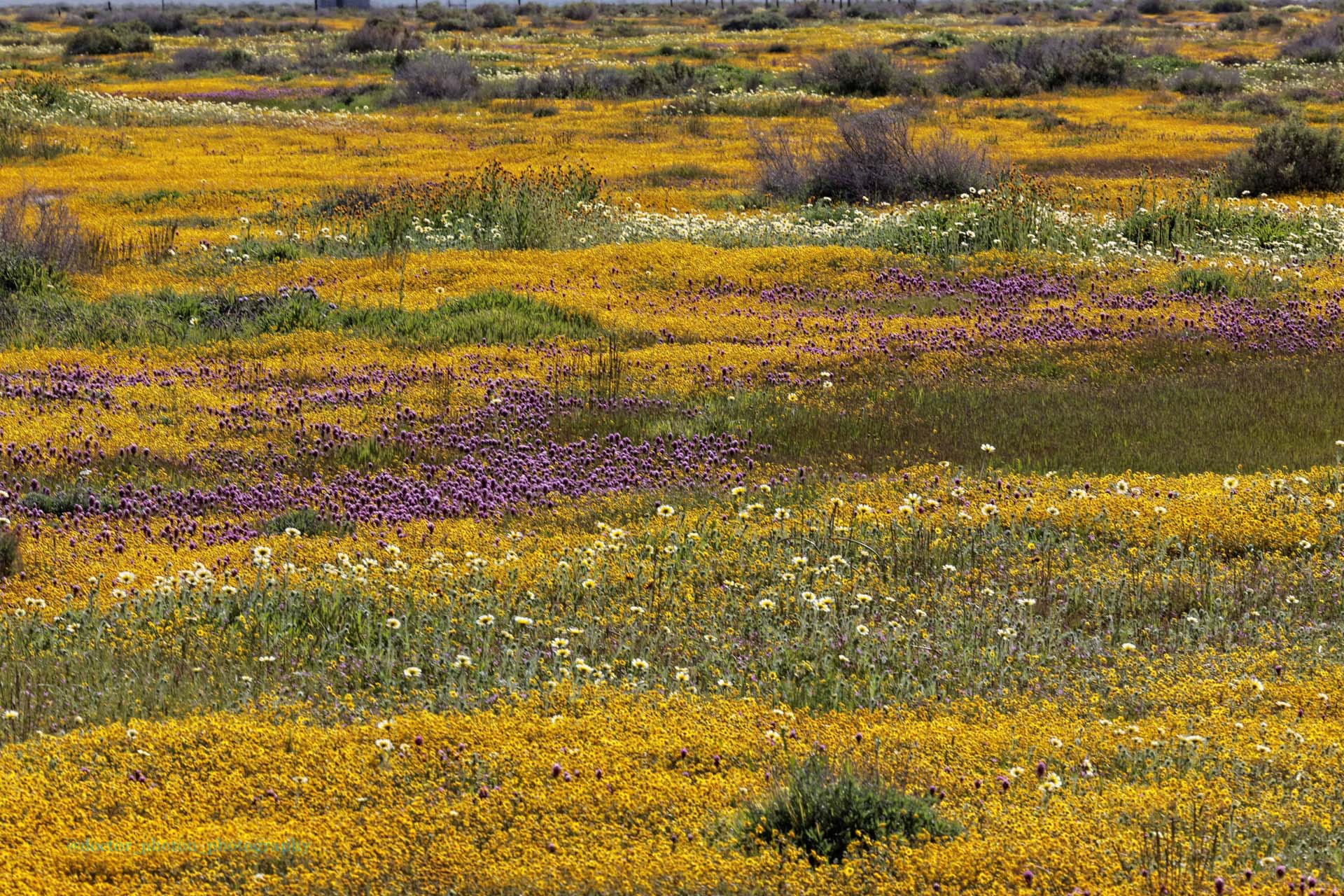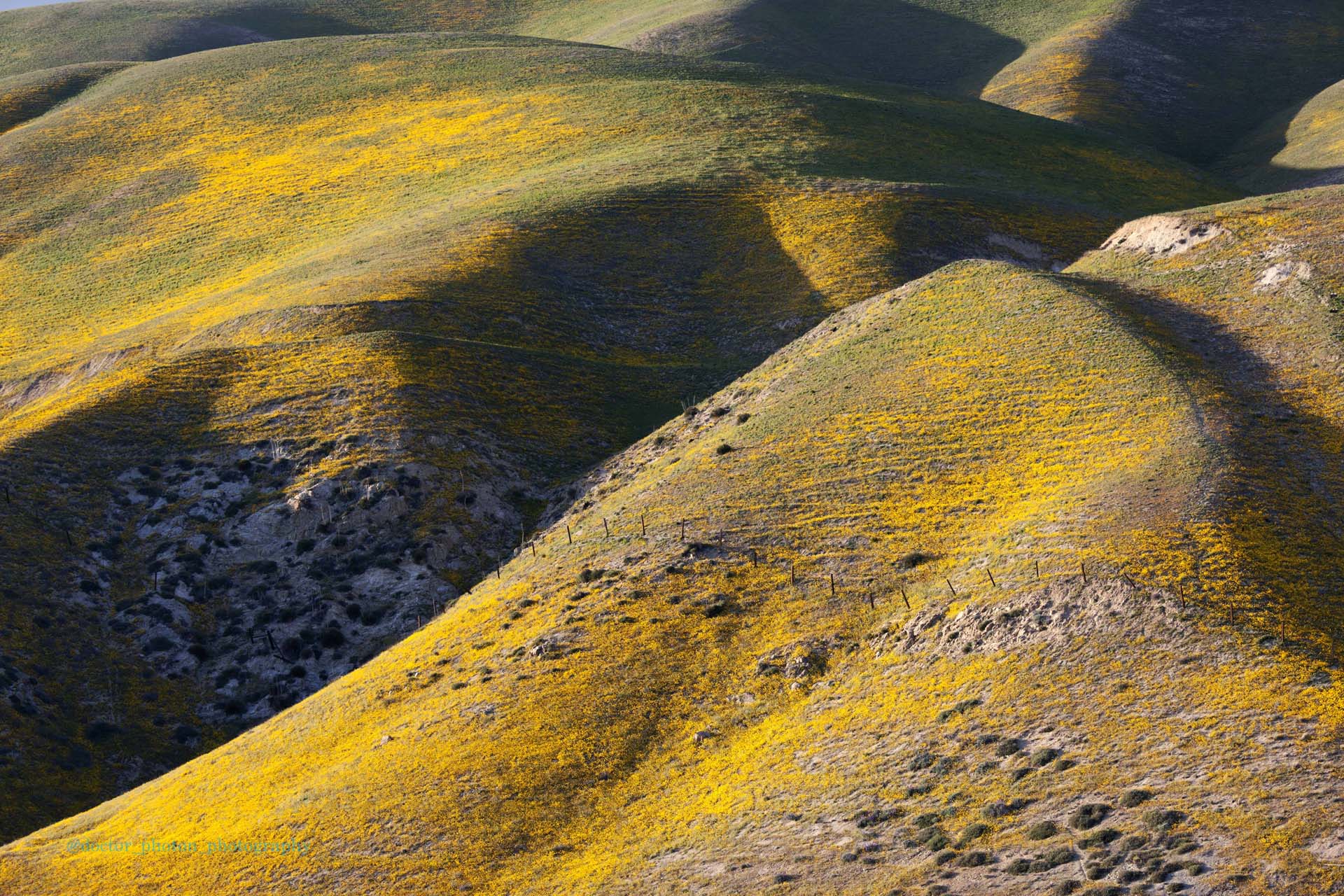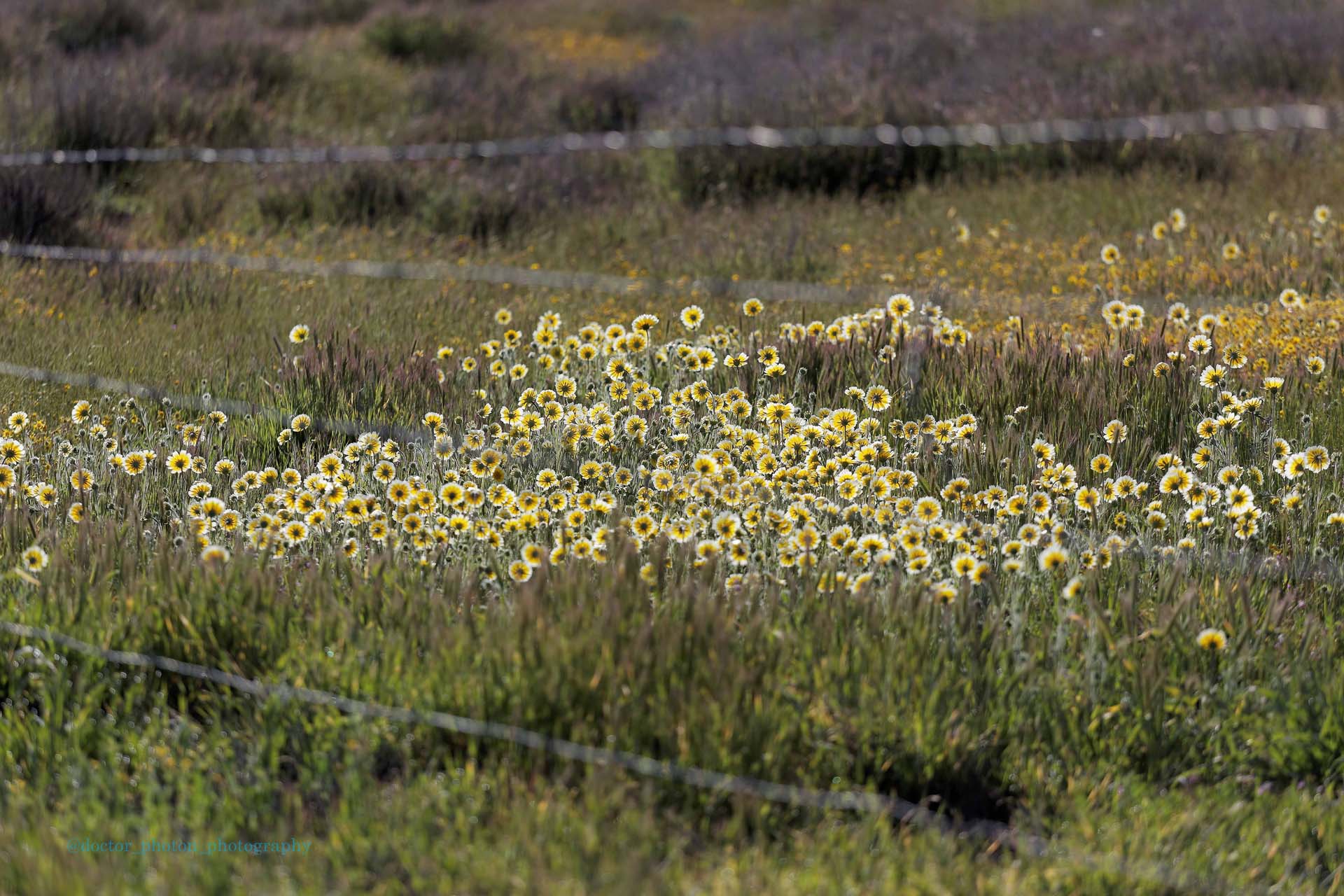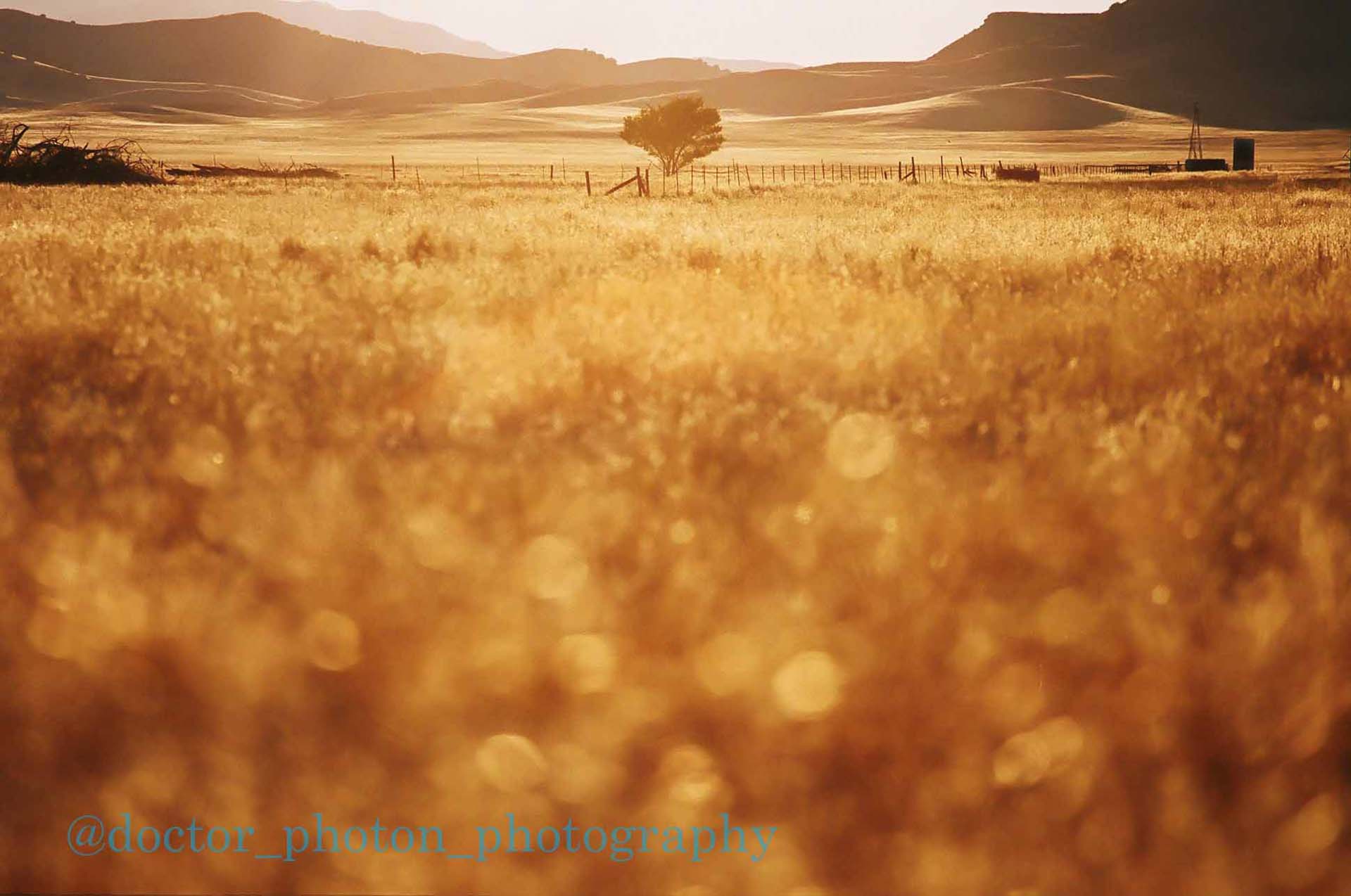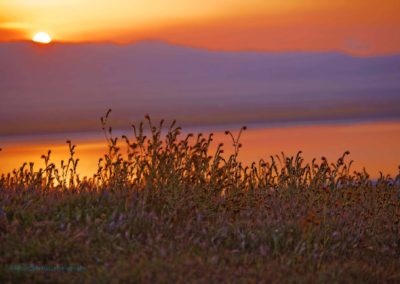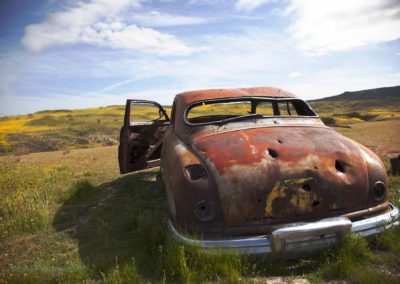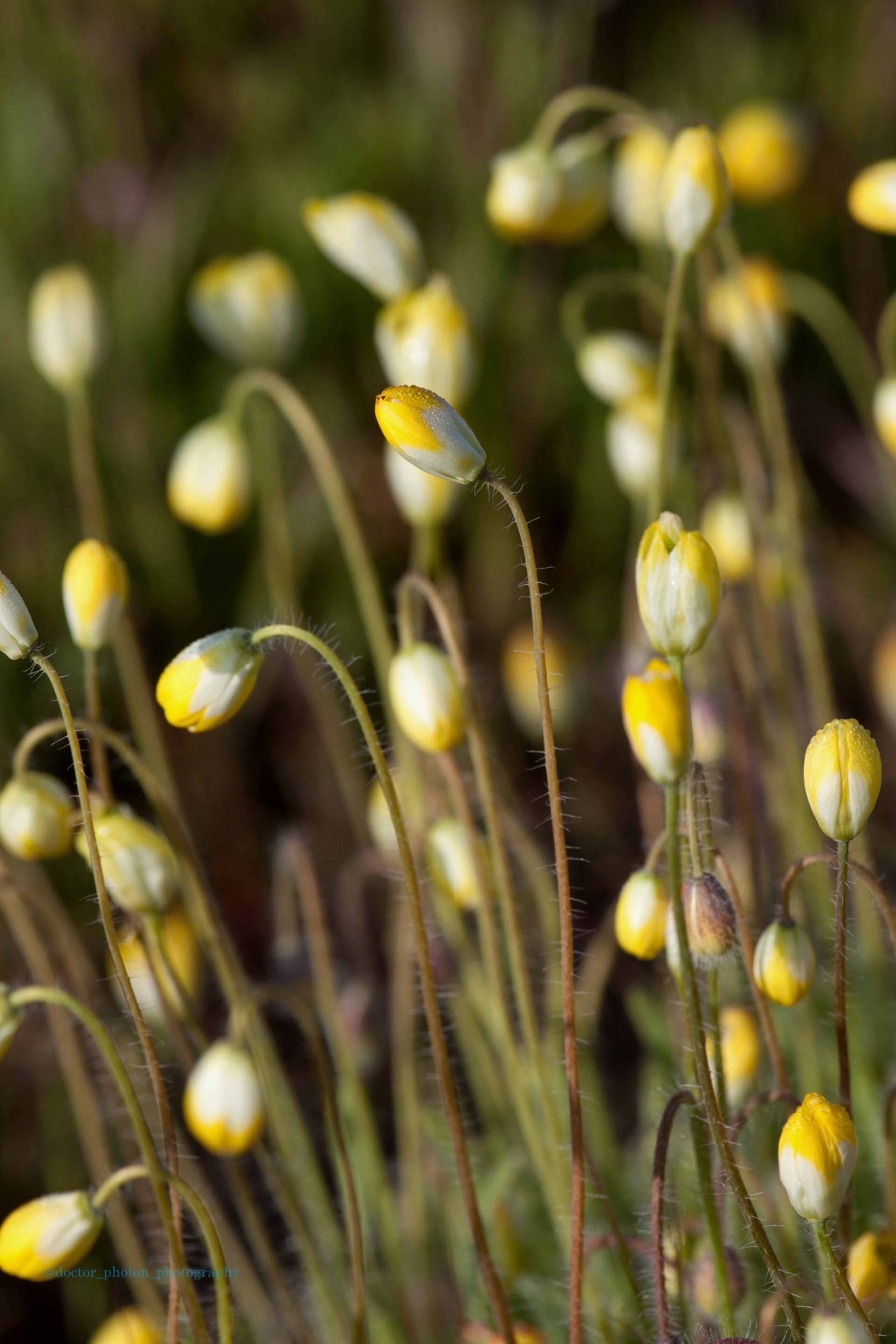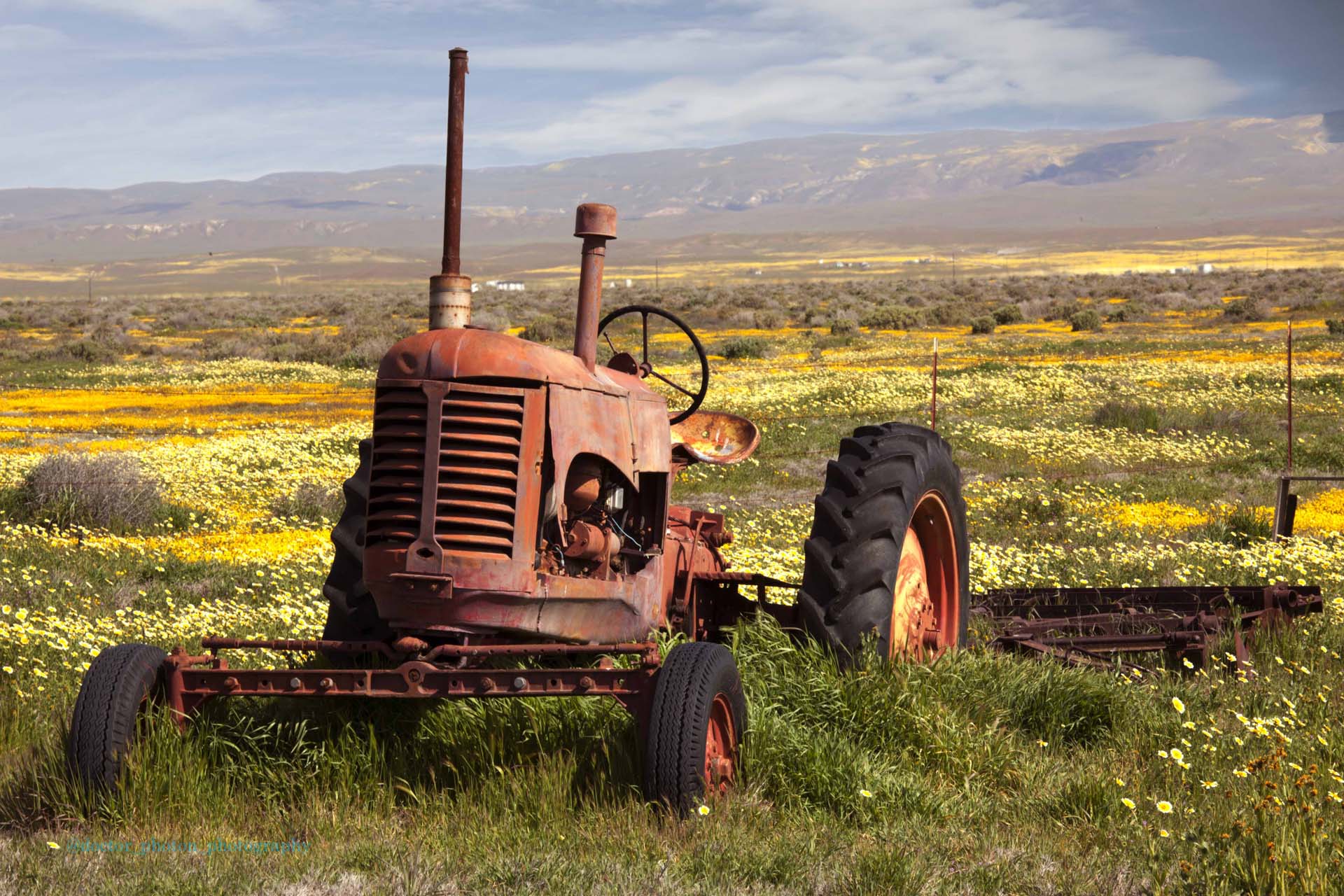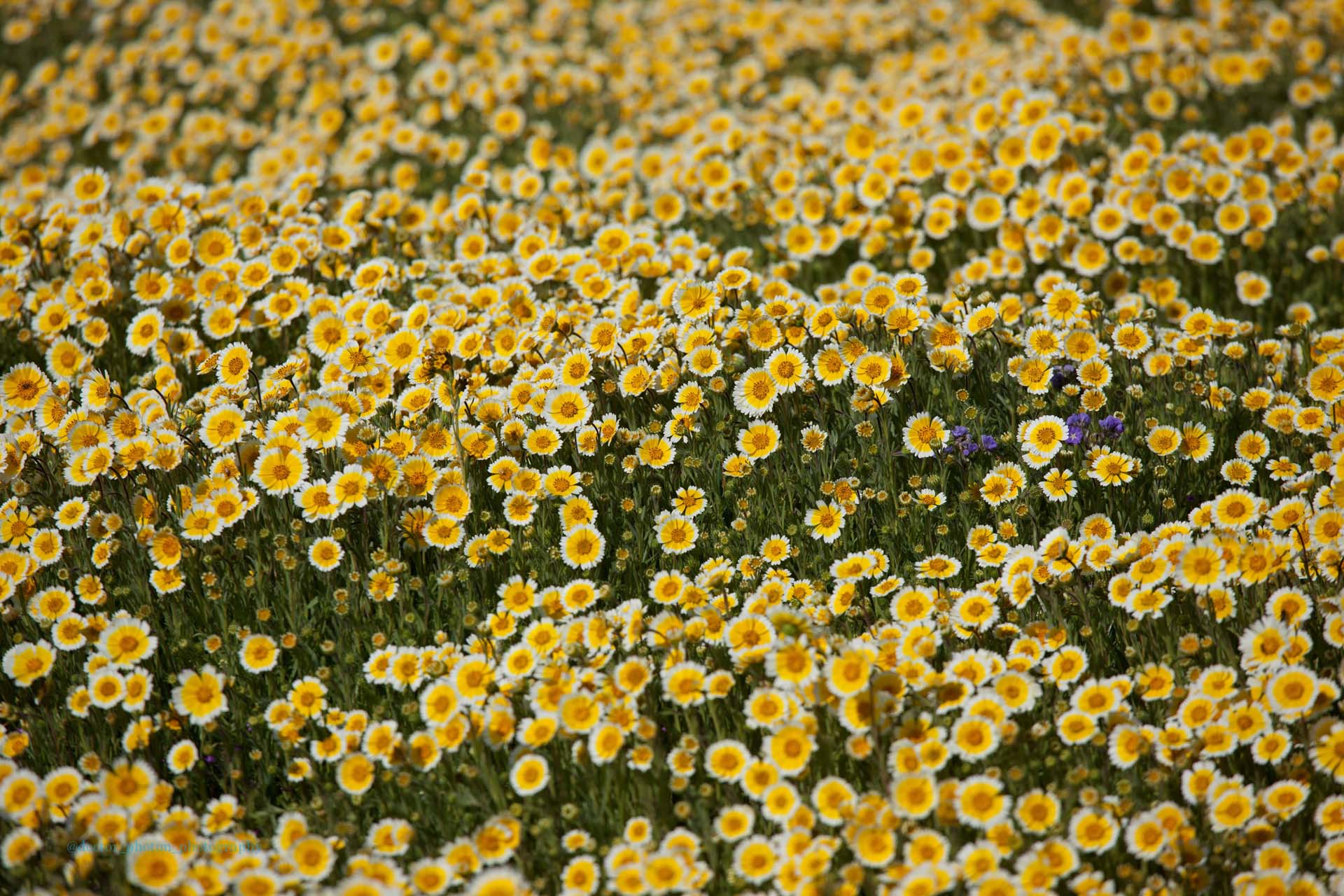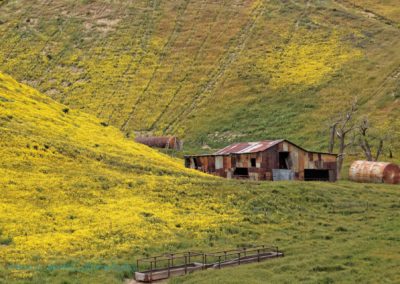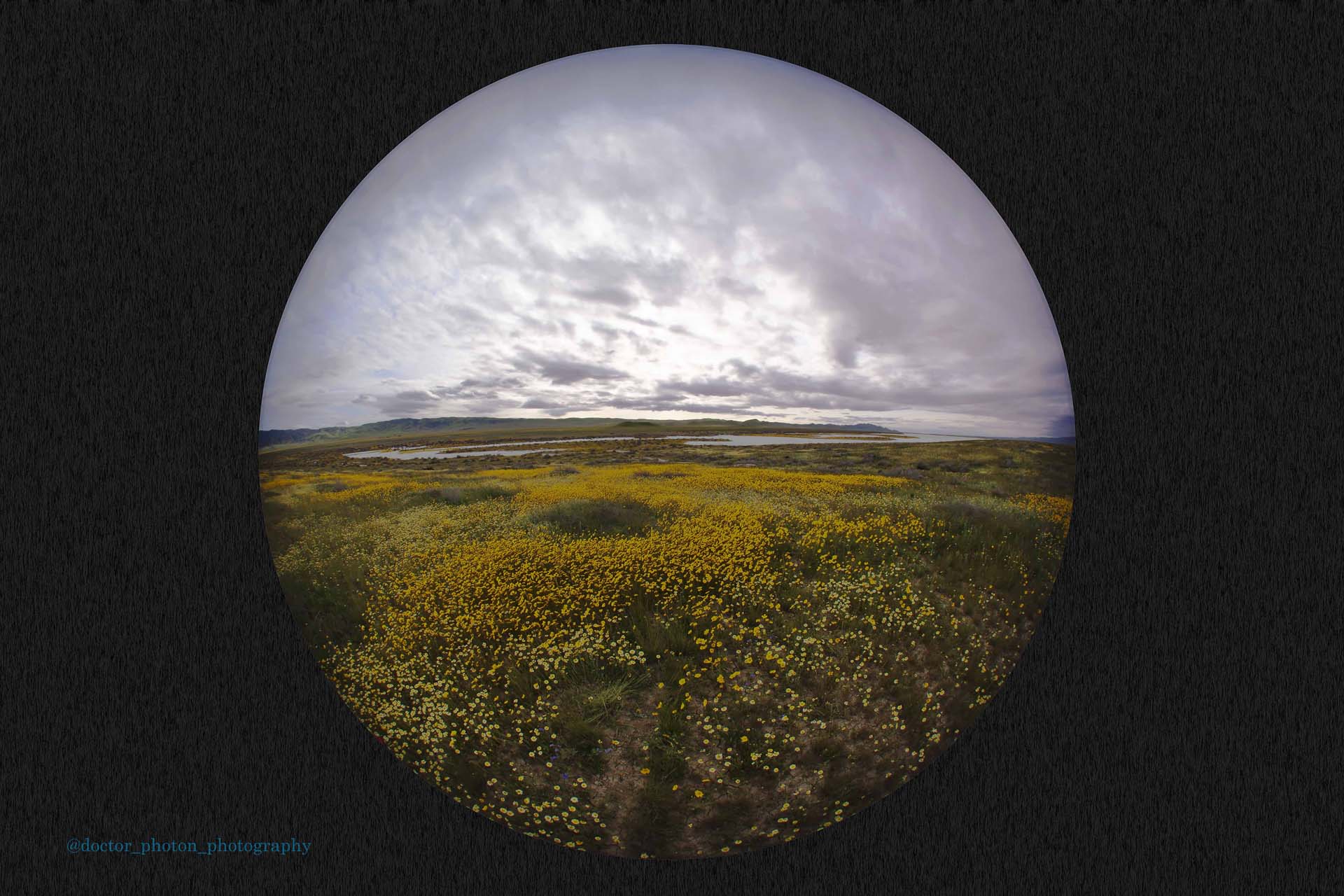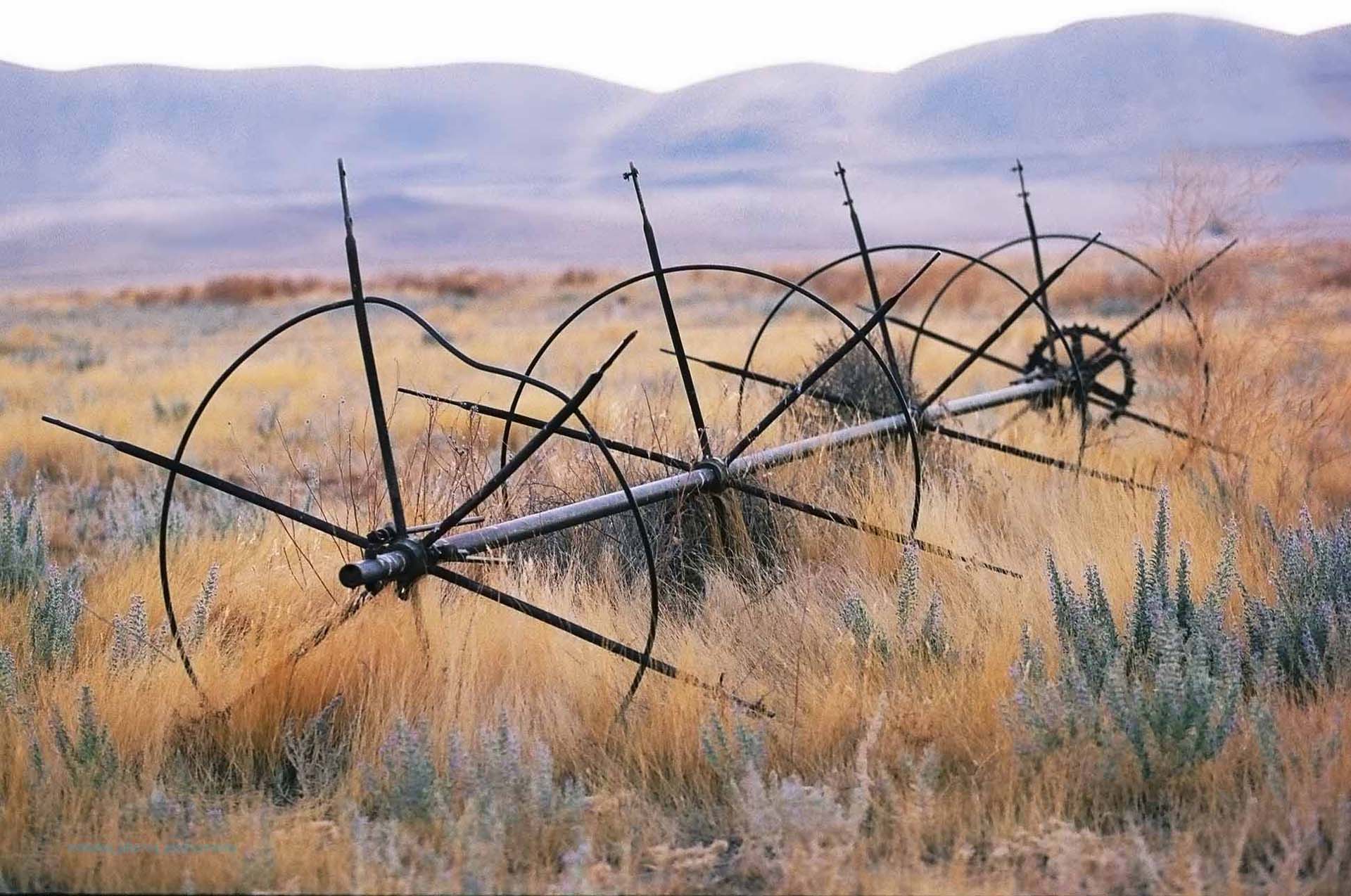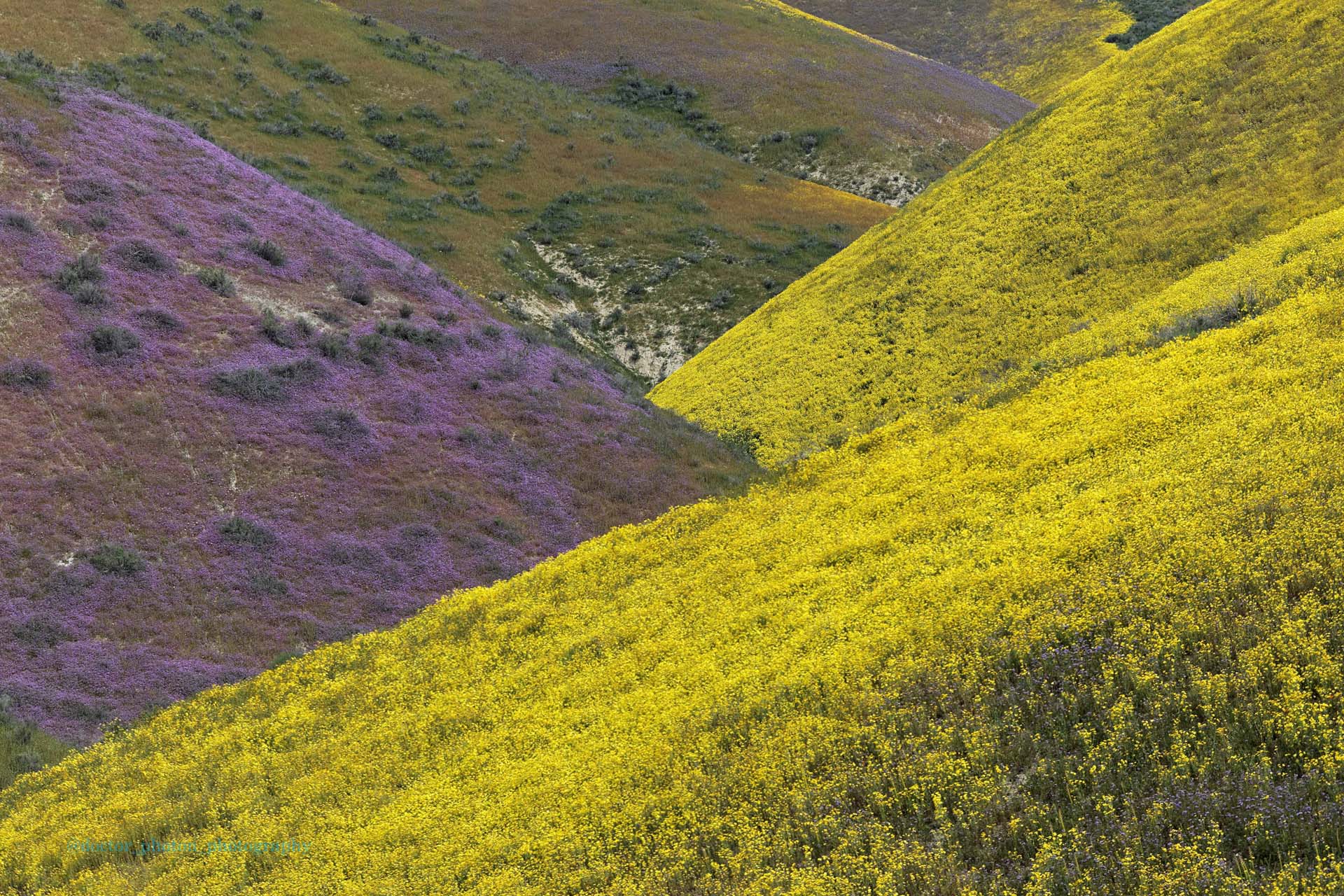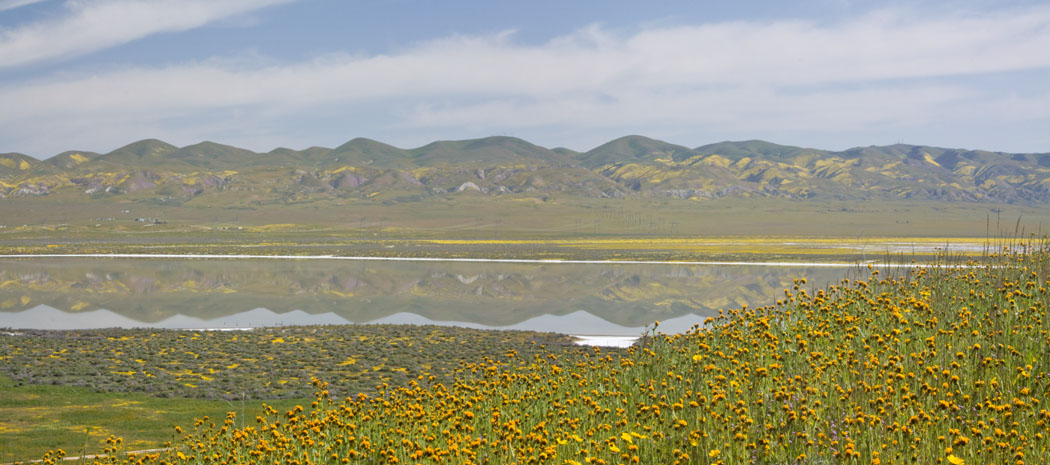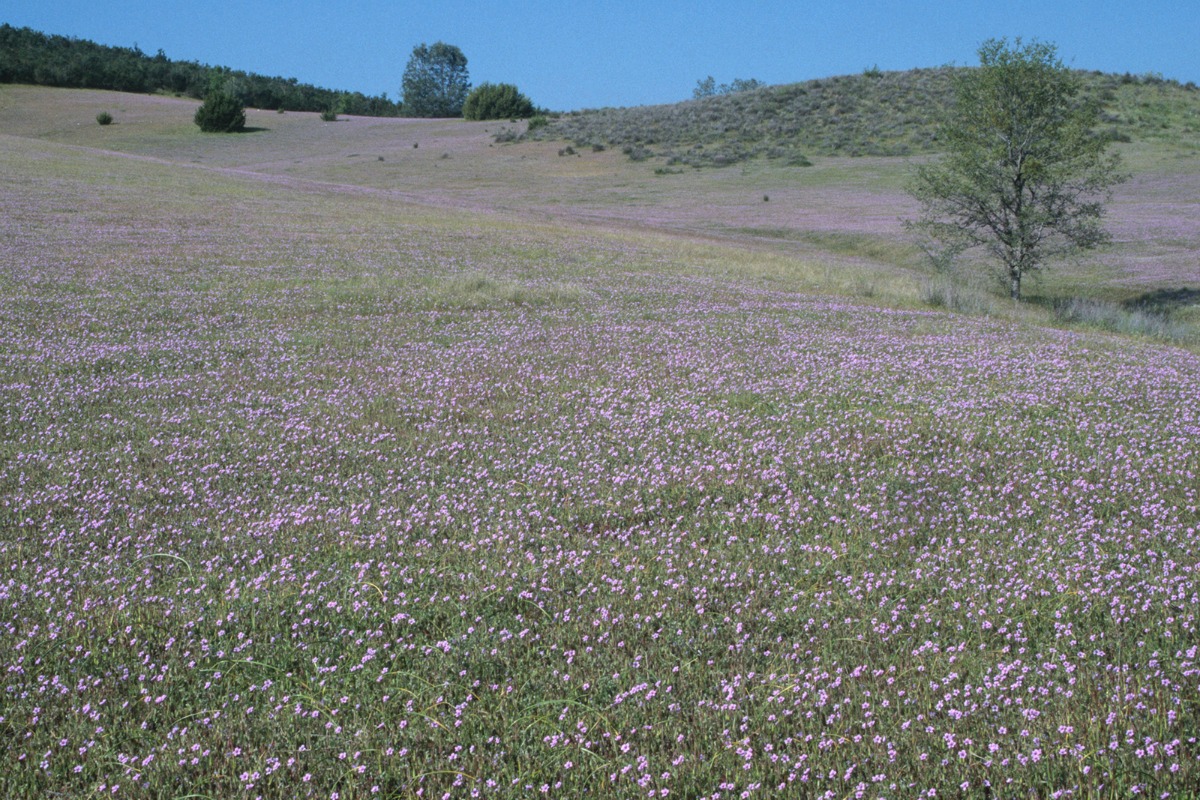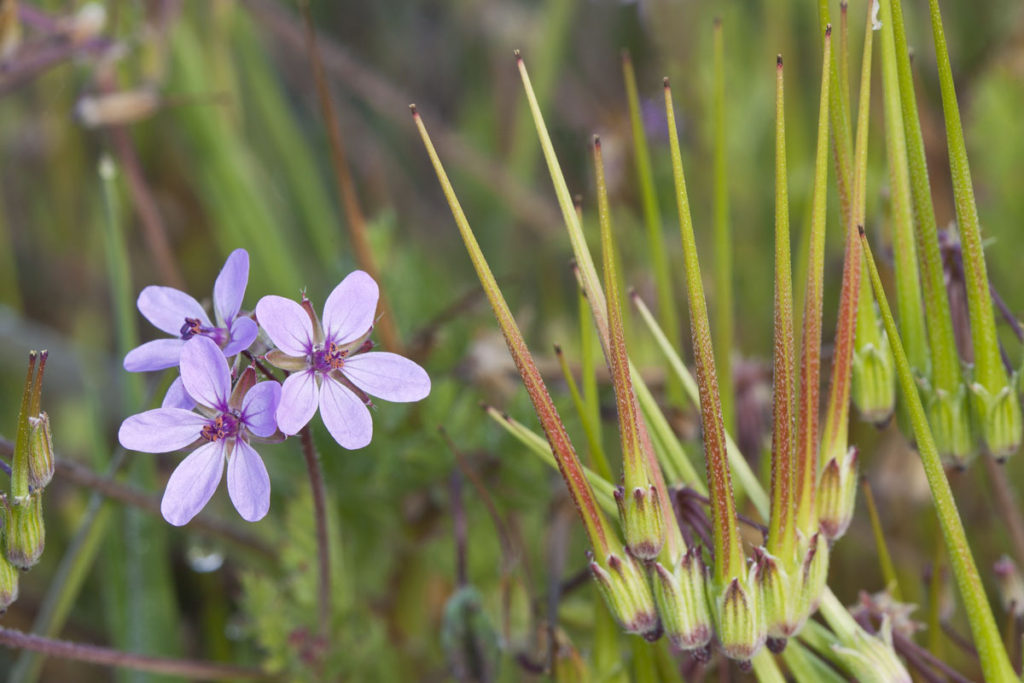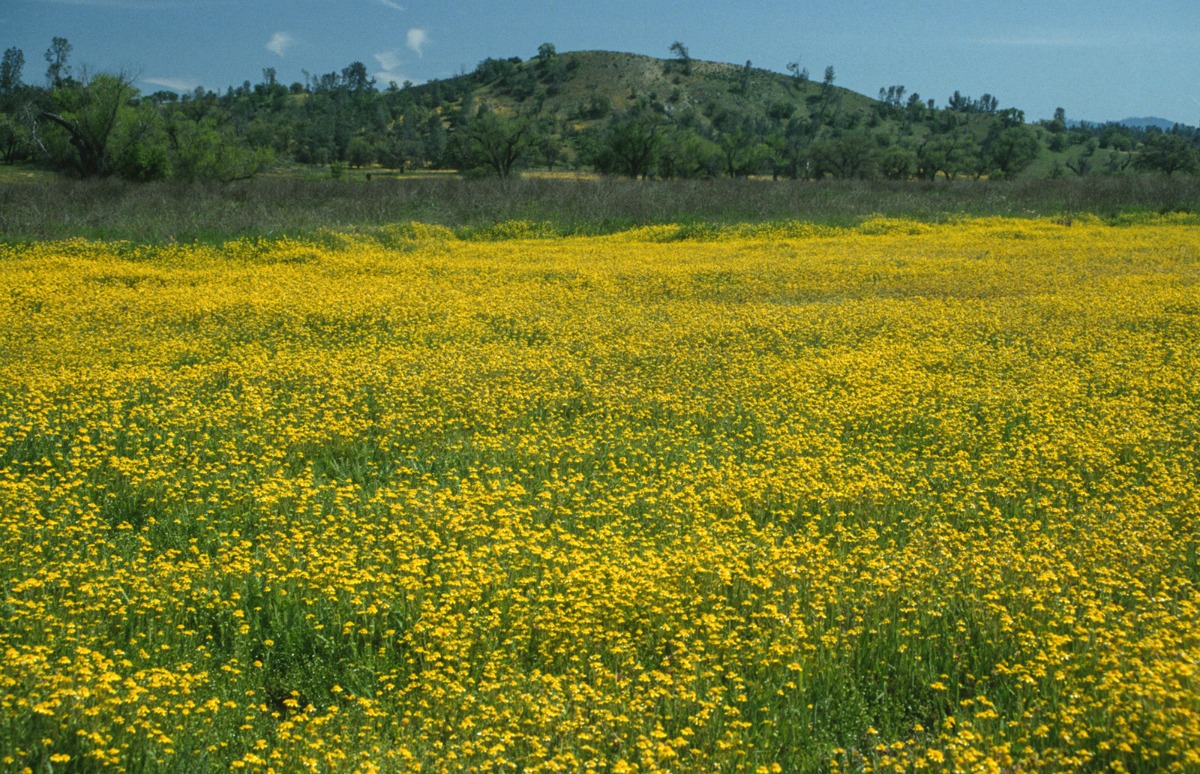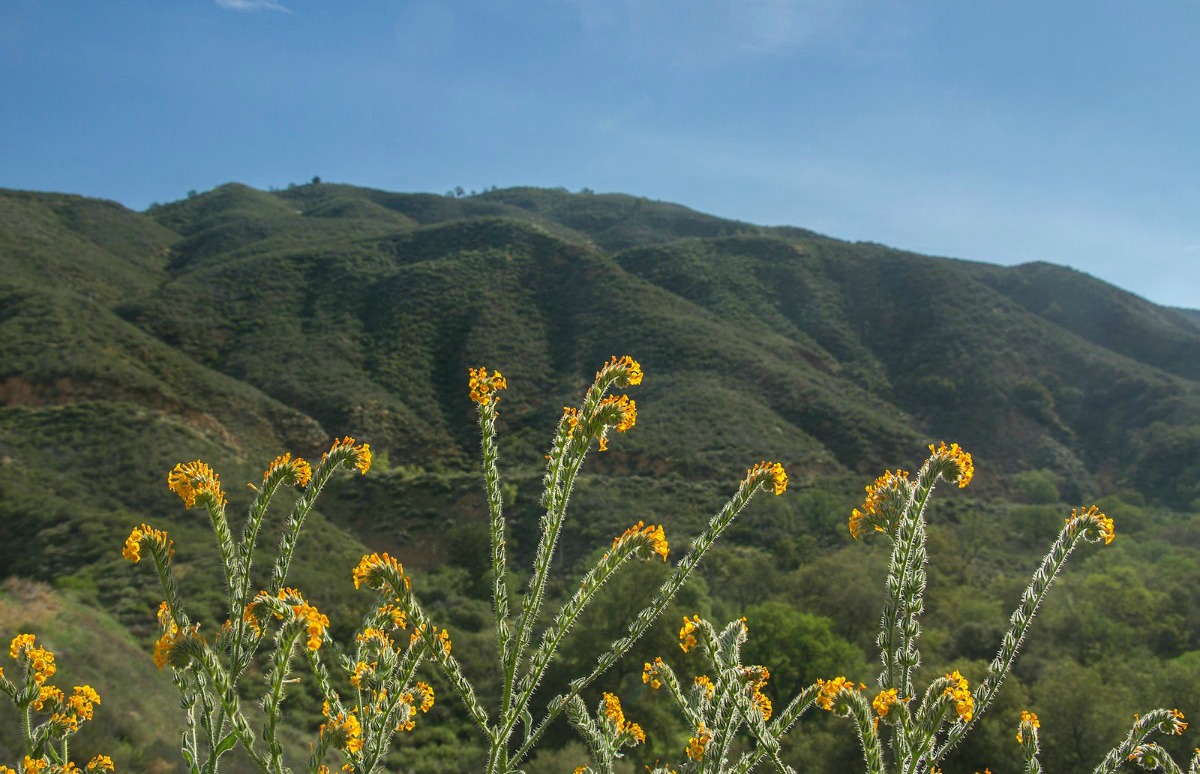Where Have All the Flowers Gone?
Many visitors to the Carrizo Plain in 2018 were expecting to see the showy displays of wildflowers that earned the area the “Superbloom” designation in 2017…but they came away disappointed. So where did all the wildflowers go? In a word:
underground. Most wildflowers in the Carrizo Plain and other arid lands around the world are annuals, a strategy in which the plants complete their life cycle in a single growing season and wait out the dry season as seeds. In the meantime, the seeds are stored in the soil not too far below the ground surface, in what is called the soil seed bank. Those seeds sprout and grow into recognizable plants when temperature and moisture conditions are just right and any additional barriers to germination are overcome.
Some perennial plants do grow on the Carrizo Plain and similar landscapes. This type of plant survives through one or more dry seasons as fleshy roots, bulbs, or similar structures—which also are underground. Among the perennials you can find on the Carrizo are blue dicks, larkspurs, and various wild onions. Even these plants may not show up every year, waiting until years of “normal” rainfall to push stems above ground and produce leaves and flowers.
Each type of annual plant needs a different combination of moisture and temperature to stimulate seed growth. Native
wildflowers (those that evolved in this region over thousands or millions of years) generally do best in years when abundant rain occurs during the cool months of mid-winter. Many native plants produce a cluster or “rosette” of leaves at ground level during the winter and do not send up a flower stalk until the weather begins to warm up in the spring.
The ubiquitous nonnative grasses—most of which evolved in the Mediterranean region of Europe—generally respond to warm fall rains. Some of the more familiar nonnative grasses are red brome, soft chess, foxtail barley, and wild oats. When this area receives early rainfall, the nonnative grasses get a head start on the native wildflowers and turn the hillsides green. By putting down roots early in the growing season, these annual grasses are able to capture and absorb any rain that falls, leaving too little available for the native wildflower seeds to grow or survive beyond the seedling stage. Thus, years when rains begin early while temperatures are still warm and rains come regularly throughout the fall and winter have been called “grass years.”
A different set of conditions is needed to produce the masses of native flowers known as “Superblooms.” These tend to occur in years with abundant winter rainfall that does not begin until the cooler months of late fall and follows several years of drought. Germination barriers can take several forms. Some plants produce chemicals in the seed coat (the outermost layer of the seed) that must be leached out by repeated wetting before the seeds can sprout. Others have such hard or thick-walled seed coats that mechanical action such as rubbing or grinding by soil particles is needed before water can penetrate. And still others—particularly those that grow in vernal pools—need to be immersed underwater for some time to allow fungi and other decay organisms to break down the seed coat. Many years—even 50 or more!—may pass before seeds of a given type of wildflower are ready to start growing again. For this reason, the endangered California jewelflower was thought to have disappeared from the Carrizo Plain entirely, until an observant biologist spotted it in the late 1980s.
In the driest years, annual plants may bloom when they are only an inch or two high, producing only one or a few flowers, and they may or may not live until the few seeds are mature. But because they do produce at least some seeds in most years, usually at least a few of those seeds are ready to grow each year. In the “off” years these small, scattered plants are hard to find, unlike the showy patches that can be seen from miles away in the wetter years. Luckily for visitors to Superblooms come along once every decade or so. We can only guess what type of year 2019 will be….
Ellen Cypher

